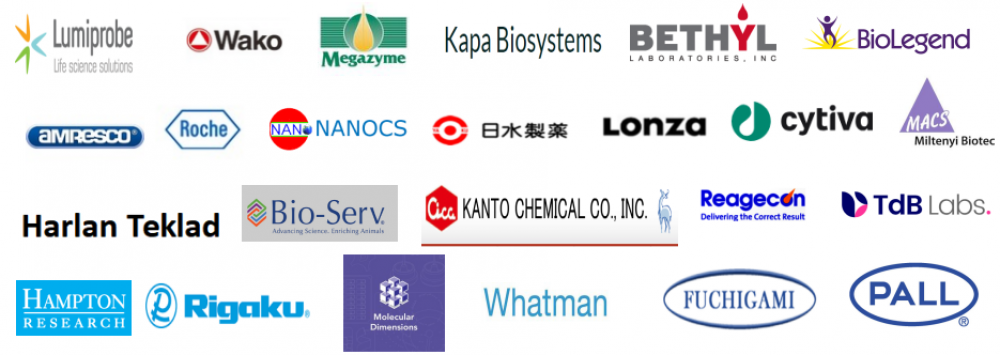Oxoid培养基 CM0785B M17琼脂 M17 MEDIUM
M17 AGAR
Code: CM0785
For improved growth of lactic streptococci and their bacteriophages and selective enumeration of Streptococcus thermophilus from yogurt.
用于改善乳酸链球菌及其噬菌体的生长以及从酸奶中选择性计数嗜热链球菌。
| Typical Formula* |
gm/litre |
| Tryptone |
5.0 |
| Soya peptone |
5.0 |
| Meat digest |
5.0 |
| Yeast extract |
2.5 |
| Ascorbic acid |
0.5 |
| Magnesium sulphate |
0.25 |
| Di-sodium-glycerophosphate |
19.0 |
| Agar |
11.0 |
| pH 6.9 ± 0.2 @ 25°C |
|
* Adjusted as required to meet performance standards
Directions
Suspend 48.25g in 950ml of distilled water and bring gently to the boil. Sterilise by autoclaving at 121°C for 15 minutes. Cool to 50°C and add 50ml of sterile lactose solution (10% w/v).
Lactose solution 10% (w/v)
Dissolve 10g of Lactose Code LP0070 in 100ml of distilled water. Sterilise by autoclaving at 121°C for 15 minutes or by membrane filtration through a 0.2µm membrane.
Description
M17 Agar is based on the formulation described by Terzaghi and Sandine1 and is recommended as an improved medium for the growth and enumeration of lactic streptococci and their bacteriophages.
Because it supports better host growth it allows the demonstration of phenomena commonly associated with other bacterial virus systems but not previously reported for lactic streptococcal phages and makes possible detailed studies of plaque morphology and lysogeny.
Lactic streptococci are nutritionally fastidious and require complex media for optimal growth2,3. Their homofermentative acid-producing nature requires that the medium is well buffered so that the culture pH is maintained above 5.7 during active growth. This maintenance of the pH is important as lower pH can result in injury and reduced recovery of lactic streptococci.
M17 Agar contains di-sodium-glycerophosphate which has sufficient buffering capacity to maintain the pH above 5.7 of actively growing cultures even after 24 hours at 30°C. This buffering agent also allows the addition of calcium without a precipitation complex being formed. The calcium-containing medium is used for the assay of bacteriophages of lactic streptococci1.
Shankar and Davies4 reported that M17 Agar was suitable for the isolation and enumeration of Streptococcus thermophilus from yogurt as the high concentration of di-sodium-glycerophosphate resulted in suppression of Lactobacillus bulgaricus. M17 Agar has been recommended5,6 by the International Dairy Federation for the selective enumeration of Streptococcus thermophilus from yogurt.
M17 Agar is also suitable for growing and maintaining starter cultures for cheese and yogurt manufacture as it has little deleterious effect on their subsequent acid-producing ability in milk at either 30°C or 22°C 1.
One further useful property of this agar is its ability to detect streptococcal mutants which are unable to ferment lactose1. These mutant Lac- strains form much smaller colonies than the parent lactose fermenting strain.
方向
将 48.25 克悬浮在 950 毫升蒸馏水中并轻轻煮沸。通过在 121°C 高压灭菌 15 分钟进行灭菌。冷却至 50°C 并加入 50ml 无菌乳糖溶液 (10% w/v)。
乳糖溶液 10% (w/v)
将 10g Lactose Code LP0070 溶解在 100ml 蒸馏水中。通过在 121°C 高压灭菌 15 分钟或通过 0.2µm 膜进行膜过滤进行灭菌。
描述
M17 琼脂基于 Terzaghi 和 Sandine1 描述的配方,被推荐作为乳酸链球菌及其噬菌体生长和计数的改良培养基。
因为它支持更好的宿主生长,它允许展示通常与其他细菌病毒系统相关但以前没有报道过的乳酸链球菌噬菌体的现象,并可能对斑块形态和溶原性进行详细研究。
乳酸链球菌对营养要求很高,需要复杂的培养基才能实现最佳生长2,3。它们的同型发酵产酸性质要求培养基缓冲良好,以便在活跃生长期间将培养物的 pH 值保持在 5.7 以上。这种 pH 值的维持很重要,因为较低的 pH 值会导致损伤和减少乳酸链球菌的恢复。
M17 琼脂含有甘油磷酸二钠,具有足够的缓冲能力,即使在 30°C 下 24 小时后也能将活跃生长的培养物的 pH 值保持在 5.7 以上。该缓冲剂还允许添加钙而不形成沉淀复合物。含钙培养基用于乳酸链球菌噬菌体的测定。
Shankar 和 Davies4 报告说,M17 琼脂适用于从酸奶中分离和计数嗜热链球菌,因为高浓度的甘油磷酸二钠可抑制保加利亚乳杆菌。 M17 琼脂已被国际乳制品联合会推荐 5,6 用于从酸奶中选择性计数嗜热链球菌。
M17 琼脂也适用于生长和维持用于奶酪和酸奶生产的发酵剂培养物,因为它在 30°C 或 22°C 1 下对它们随后在牛奶中的产酸能力几乎没有有害影响。
这种琼脂的另一个有用特性是它能够检测无法发酵乳糖的链球菌突变体1。这些突变的 Lac- 菌株形成的菌落比亲本乳糖发酵菌株小得多。
Technique
Bacteriophage assay
Microbiologists wishing to assay phage activity should consult the paper of Terzaghi and Sandine1 for a comprehensive description of the method.
For the enumeration of Streptococcus thermophilus in yogurt
1. Mix or blend the yogurt sample to obtain a uniform homogenicity.
2. Weigh 10 ± 0.1g of the test sample into a 200ml round bottom centrifuge tube made of strengthened glass, or the container of the mechanical mixer.
3. Add sterile 0.1% (w/v) peptone solution ‡ to the test sample until the mass of the test sample and diluent is 50g.
4. Prepare a suitable series of decimal dilutions of the yogurt suspension in 9ml volumes of sterile 0.1% (w/v) peptone solution.
5. (i) Inoculate duplicate plates of M17 Agar with a loopful from each dilution and spread to obtain single colonies.
(ii) Add duplicate 1ml aliquots of the dilution into a Petri dish and prepare pour plates with 14ml of sterile M17 Agar cooled to 43°C ± 1°C.
6. Incubate at 35°C for 48 hours.
7. Examine the plates after 24 and 48 hours incubation. Streptococcus thermophilus colonies are visible after 18-24 hours and after 48 hours incubation form colonies of 1-2mm in diameter. Lactobacillus bulgaricus do not grow or produce very restricted colonies.
8. Carry out the counts on pour plates and express the results as the number of colony forming units per gram of sample.
0.1% peptone water6 can be prepared as follows: ‡
| LP0042 Tryptone |
0.5g |
| LP0049 Peptone |
0.5g |
| Distilled water 1 litre |
|
Sterilise by autoclaving at 121°C for 15 minutes.
Confirmation
Colonies isolated from milk products that are suspected to be Streptococcus thermophilus can be confirmed by the Gram stain (Gram positive cocci) and catalase test (negative).
Storage conditions and Shelf life
Store the dehydrated medium at 10-30°C and use before the expiry date on the label.
Store the prepared medium at 2-8°C.
Appearance
Dehydrated medium: Straw coloured, free-flowing powder
Prepared medium: Straw coloured gel
Quality control
| Positive control: | Expected results |
| Streptococcus thermophilus ATCC® 14485 | Good growth; white colonies |
| Negative control: | |
| Lactobacillus bulgaricus ATCC® 11842 | No growth |
* This organism is available as a Culti-Loop®
References
1. Terzaghi B. E. and Sandine W. E. (1975) Applied Microbiology 29. 807-813.
2. Anderson A. W. and Elliker P. R. (1953) J. Dairy Science 36. 161-167.
3. Reiter B. and Oram J. D. (1962) J. Dairy Res. 29. 63-77.
4. Shankar P. A. and Davies F. L. (1977) J. Soc. Dairy Technology 30. 28-30.
5. International Dairy Federation (1981) Joint IDF/ISO/AOAC Group E44.
6. International Organization for Standardization (1985) ISO/DIS 7889.
